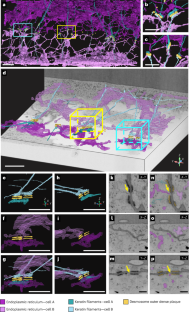2023-10-09 ペンシルベニア州立大学(PennState)
◆彼らは感情表現に関するアノテーションされた人間の動きのデータセットを開発し、深層ニューラルネットワークを使用して感情認識に役立つ中間フィーチャーを生成しました。この研究は、支援ロボットとのコミュニケーション強化、精神科専門家のサポート、人間と機械の相互作用の安全性向上など、様々な応用分野での可能性を秘めています。
◆研究チームは、身体の動きが感情を示す方法を示す「身体モーター要素」のデータセットを作成し、これを深層ニューラルネットワークによる感情認識の手段として活用しました。その結果、感情を身体言語で理解する機械の能力向上が期待されています。
<関連情報>
- https://www.psu.edu/news/information-sciences-and-technology/story/human-body-movements-may-enable-automated-emotion/
- https://www.cell.com/patterns/fulltext/S2666-3899(23)00185-X
ラバン動作分析を統合した身体表現感情理解 Bodily expressed emotion understanding through integrating Laban movement analysis
Chenyan Wu,Dolzodmaa Davaasuren,Tal Shafir,Rachelle Tsachor,James Z. Wang
Patterns Published:August 22, 2023
DOI:https://doi.org/10.1016/j.patter.2023.100816
Highlights
•BoME dataset characterized by Laban movement analysis
•Estimating Laban movement analysis motor elements with deep neural networks
•Jointly training dual-branch, dual-task movement analysis network
•State-of-the-art performance on both motor element and emotion recognition tasks
The bigger picture
Body movements carry important information about a person’s emotions or mental state and are essential in everyday communication. Enhancing machines’ ability to understand emotions expressed through body language can improve communication between assistive robots and children or elderly users, provide psychiatric professionals with quantitative diagnostic and prognostic assistance, and bolster safety by preventing mishaps in human-machine interactions. This study develops a high-quality human motor element dataset based on the Laban movement analysis movement coding system and utilizes that to jointly learn about motor elements and emotions. Our long-term ambition is to integrate knowledge from computing, psychology, and performing arts to enable automated understanding and analysis of emotion and mental state through body language. This work serves as a launchpad for further research into recognizing emotions through the analysis of human movement.
Summary
Bodily expressed emotion understanding (BEEU) aims to automatically recognize human emotional expressions from body movements. Psychological research has demonstrated that people often move using specific motor elements to convey emotions. This work takes three steps to integrate human motor elements to study BEEU. First, we introduce BoME (body motor elements), a highly precise dataset for human motor elements. Second, we apply baseline models to estimate these elements on BoME, showing that deep learning methods are capable of learning effective representations of human movement. Finally, we propose a dual-source solution to enhance the BEEU model with the BoME dataset, which trains with both motor element and emotion labels and simultaneously produces predictions for both. Through experiments on the BoLD in-the-wild emotion understanding benchmark, we showcase the significant benefit of our approach. These results may inspire further research utilizing human motor elements for emotion understanding and mental health analysis.
Graphical abstract



